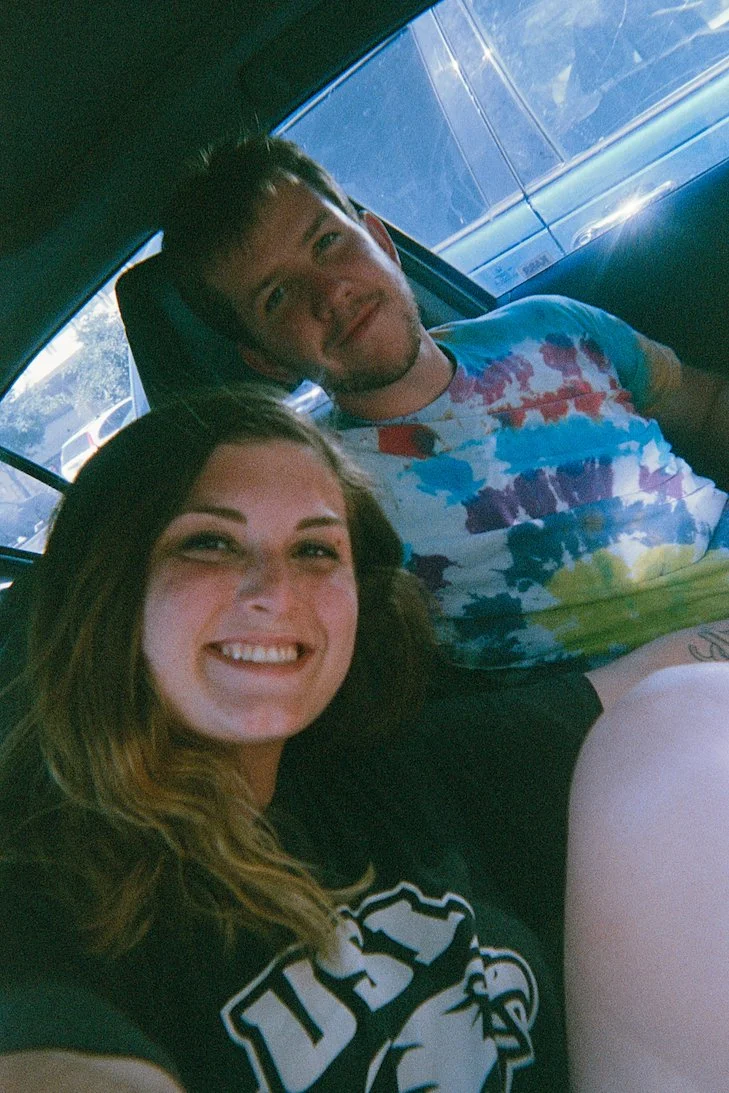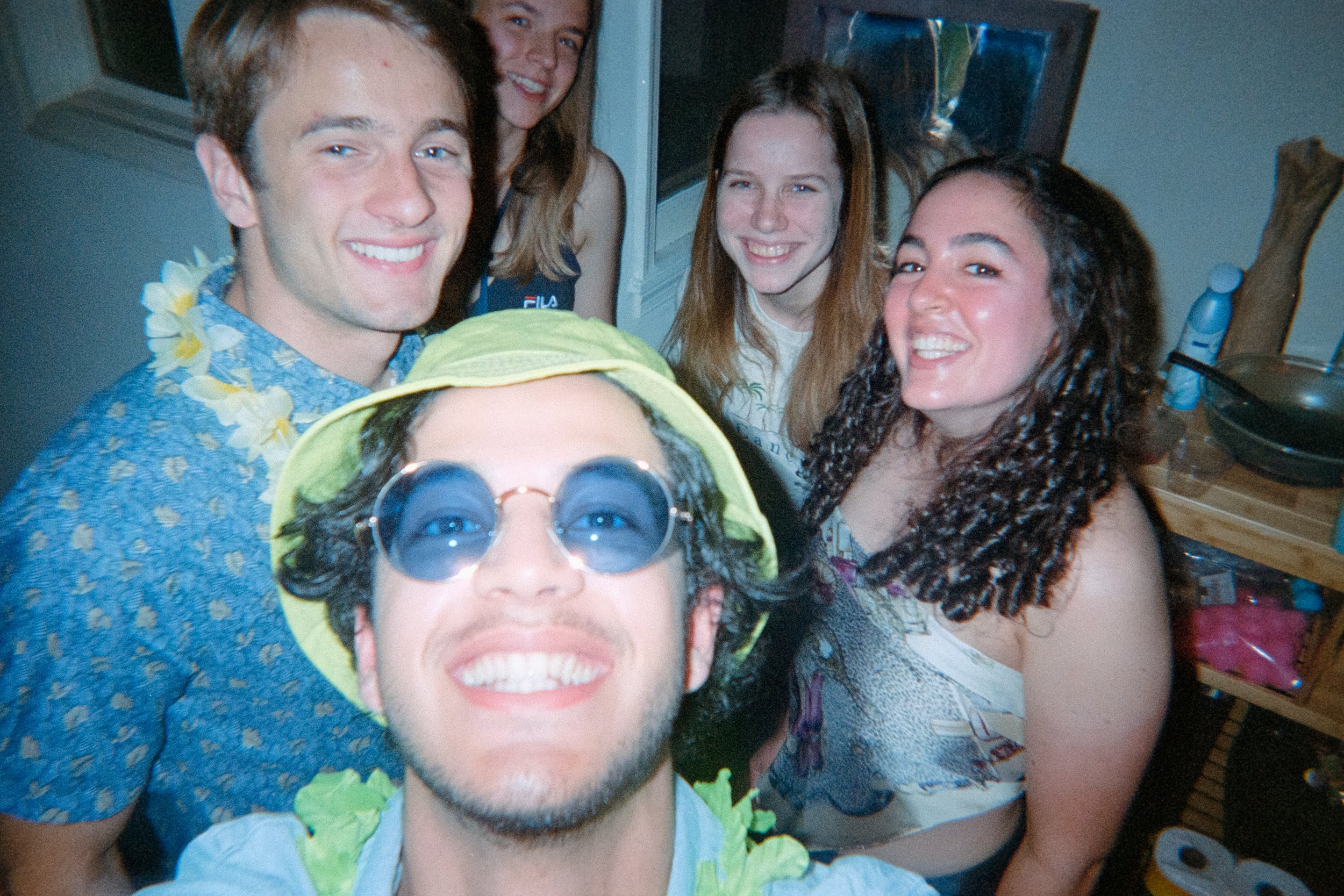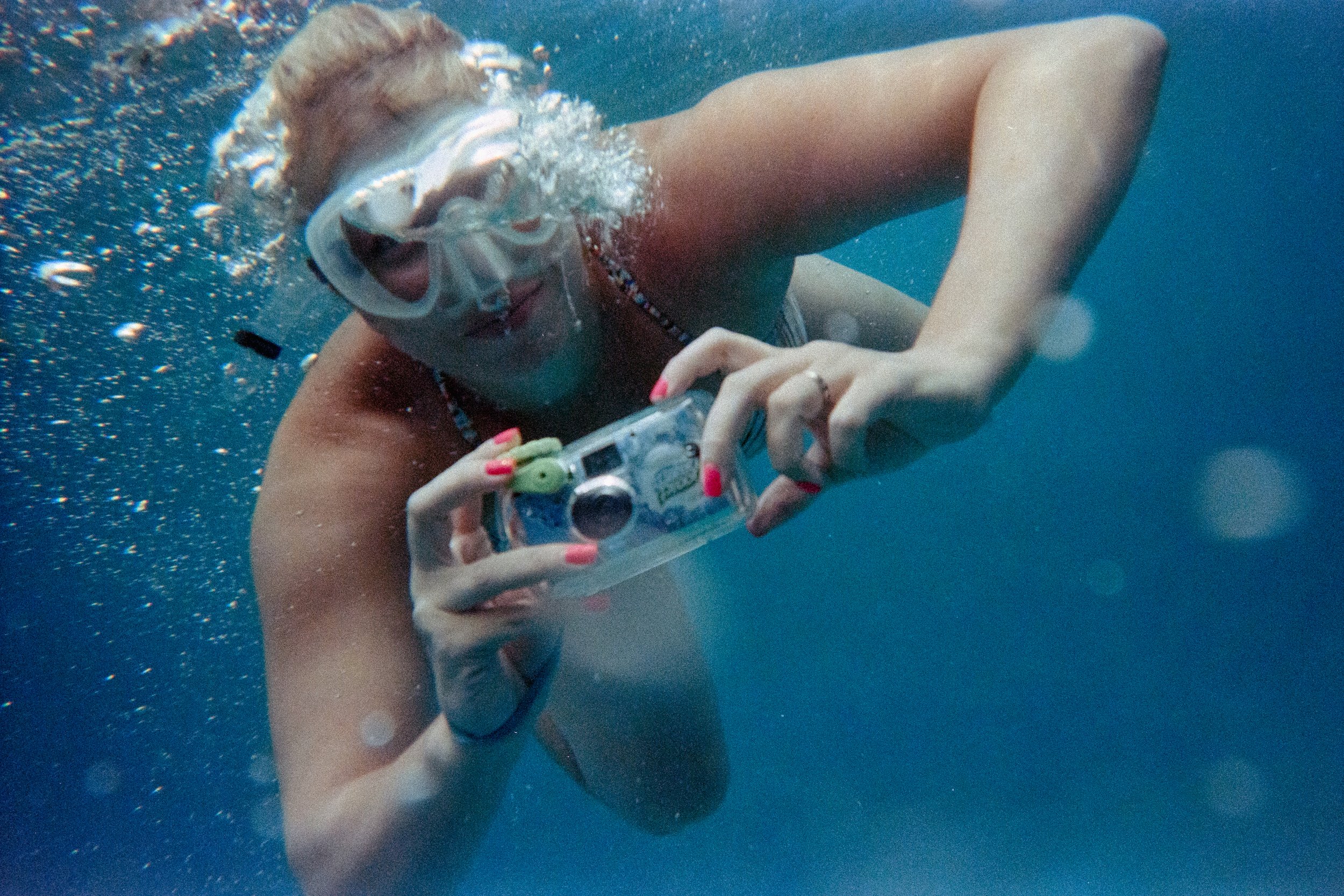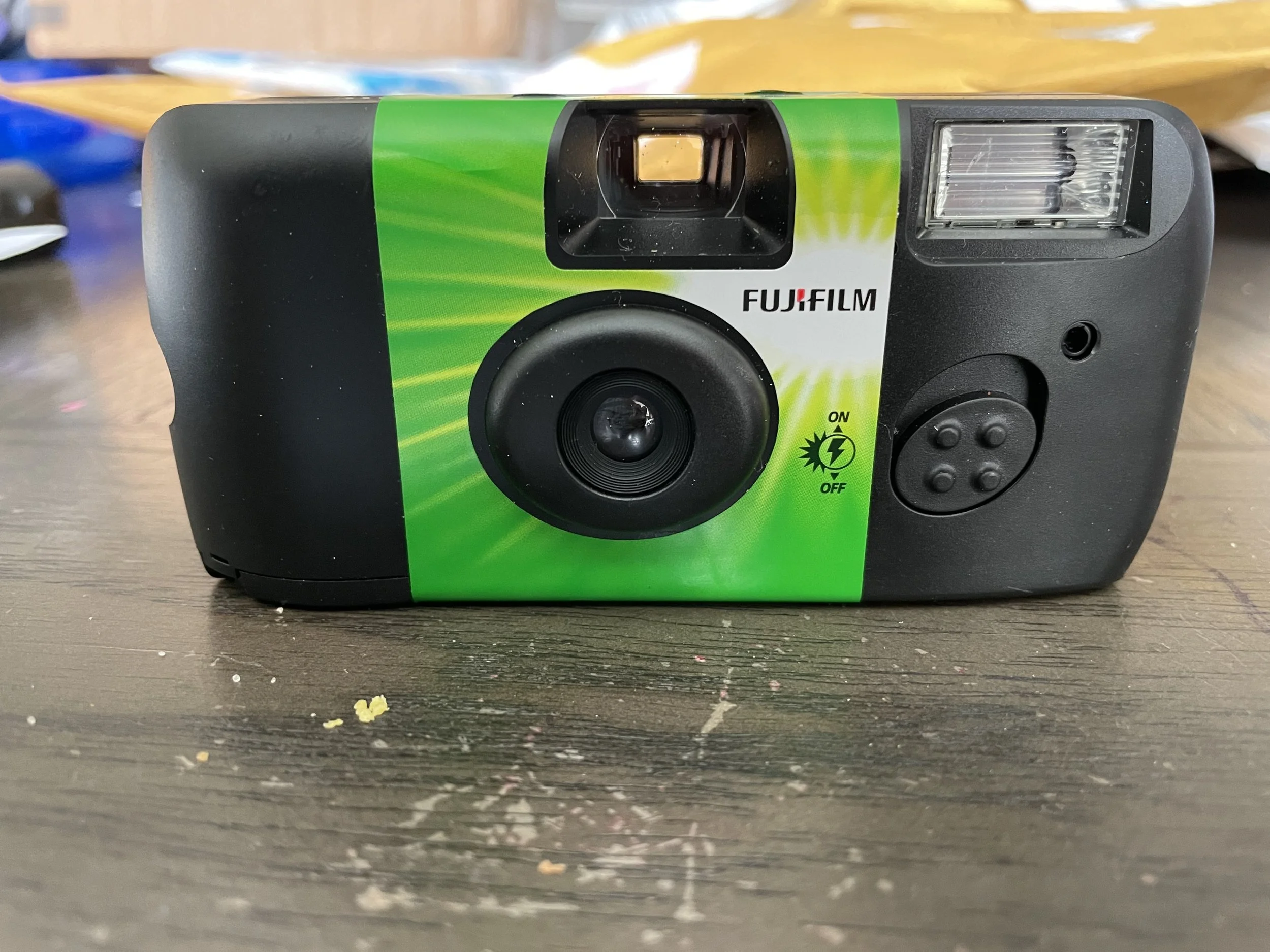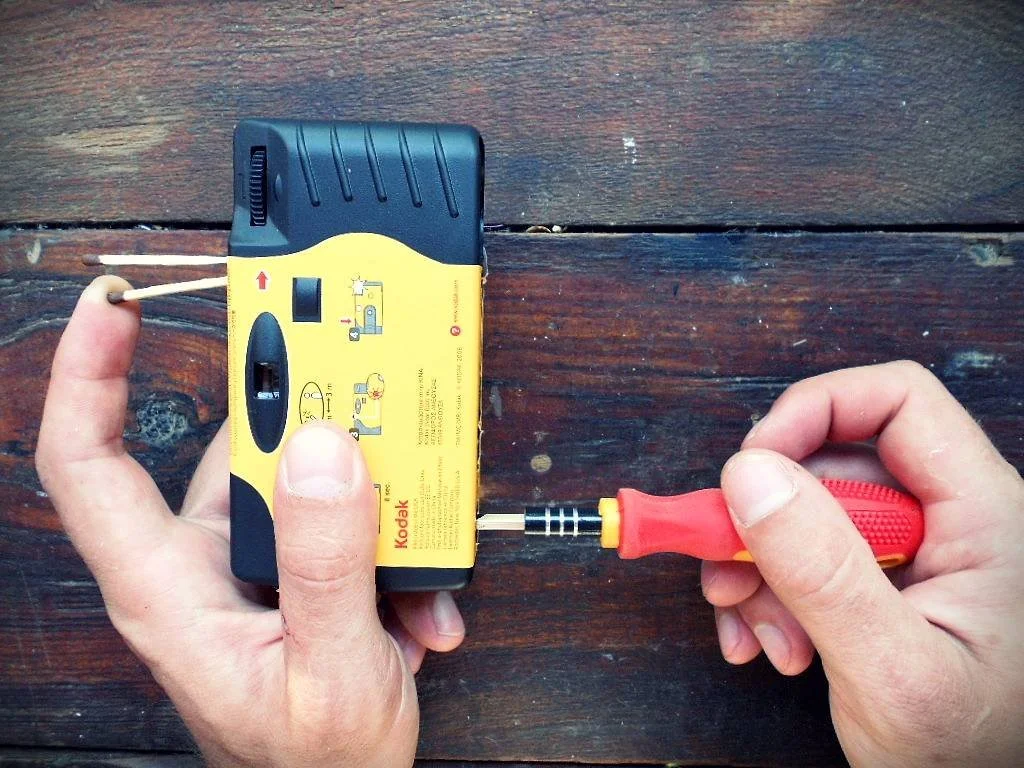The Perfect Camera for Mom
It can be so stressful trying to find a great Mother’s day Gift for your mom or even just a gift for your mom in general. I know that my mom is the hardest person to shop for, but I always want to get something for her that is sweet and meaningful and that she will enjoy, but I also don’t want to get her anything that she won’t really use. Also, I’m usually on a pretty tight budget, so getting mom the perfect gift that is also an affordable gift makes getting her something a real challenge.
Mom’s love photos
One of the easiest gifts you can get your mom is a nicely framed photo. These are affordable and easy to make and you can even find a frame or customize a frame that will really fit your mom’s style. But as nice as a framed photo is, its not really something your mom can actively enjoy or use. What kind of gift could you get your mom that will help her to preserve memories and be actively involved? How about a camera?
A Disposable camera is a great gift idea for mom
So what makes a disposable camera a good idea? Most of our moms have been capturing moments on her iPhone for a while now, but its difficult to get those images printed and most moms just end up never looking at them. A disposable camera is a great idea for a lot of reasons.
Disposable Cameras have a cool nostalgia factor
More than likely, your mom has used a disposable camera in her life. They are simple and fun and they haven’t changed. Get ready for her to say something like “I haven’t seen one of these in a years!“ and “I didn’t know they still made these!” Also, she’s probably gonna have some stories. But its great because mom’s love telling stories!
Disposable cameras are easy to use
Regardless of your mom’s technical and technological abilities, she’ll have no problem picking up a disposable camera and taking pictures! All you do is wind the film until it stops, turn on the flash, and click the shutter button when you’re ready to take a photo! Its really simple.
DISPOSABLE camera Photos are Really Unique
Its not just another poor quality cellphone camera image. Disposable cameras use film and the plastic wide angle lens will give your mom’s photos that classic film look. Film grain, contrast, and the hi-key flash look will give your mom’s photos a vintage appeal that she will remember from taking photos when she was younger.
Disposable cameras are cheap
This is my favorite part! At around $20 a disposable camera is an super affordable way to get your mom something she can use and enjoy the results for years to come. You could spend a lot more on something else, but you know your mom is going to love and use this gift, probably as soon as she opens it up! One disposable camera lets you take 27 photos and you can take a few here and there so your mom can use one camera at several family events!
The one Draw-back to buying a disposable Camera as a gift
As fun and easy as disposable cameras are, there is one draw-back. You do still have to get the film inside developed. This usually involves dropping your camera off at a local film lab or sending your camera off to a mail-in photo lab (like ours). Here’s a link to a previous article where you can learn more about getting your disposable camera developed!
This is the most frustrating part of the process, mostly because it takes a while, but the results are always fun and worth the added wait. Your mom probably remembers having to send film in lol.
Where can I buy a Disposable Camera?
You can still pick-up disposable cameras in many stores and drug-stores. Walmart, Target, Walgreens, and CVS all carry disposable cameras. You can also order disposable cameras online from many retailers. Amazon carries disposable cameras - click here to browse Amazon’s selection. You can also pick-up disposable cameras from us - just go check out our store by Clicking Here
Which Brand of Disposable Camera Should I Buy for my Mom?
Both Fuji and Kodak have some great disposable camera options. Ilford offers some black and white and color disposable cameras as well. Lomography sells their disposable cameras as simple-use cameras and their cameras come loaded with some really cool film types. There are several disposable cameras out there that come from China and are marketed under a lot of different brands. These cameras are usually lower quality and have some really bad film in them. Avoid these awful cameras and stick to the name brands to get the best results.
Other Great Cameras for Mom
If the disposable camera option doesn’t quite fit your mom’s style, then you might also consider an instant camera. Fuji Instax Cameras and Film are fun and easy to use! Polaroid Cameras and Film are also fun and have a cool nostalgia factor too! Cameras and film from both companies are available at most big-box stores as well as online at Amazon and other retailers!
Make this gift special!
A disposable camera is a great for mom. It gives her the ability to capture more memories, relive some old ones, and creates images that will be as unique as they are special! Get mom a disposable camera and make sure you’ve got your camera handy so you can capture the smile on her face when she opens it up!
Can You Mail a Disposable Camera?
Are you ready to get your disposable cameras developed? Are you looking for where to get your disposable camera developed and realized that you will have to mail them in? So now you’ve got to try to figure out, can you mail a disposable camera?
Fortunately, the answer is yes! Disposable Cameras are safe to mail and actually very easy to ship, once you consider a few things. If you’re mailing a disposable camera to a friend or family member, or into a lab to be developed, you can rest assured that its completely safe to mail them through USPS or ship them through FedEX, UPS, or other carriers.
How Should I pack my Disposable CAmera for Shipping?
Disposable cameras are actually extremely durable. They are made from a tough type of plastic that is difficult to break or crack. You would literally have to run a disposable camera over with a vehicle to destroy it. So you don’t need to worry about the cameras being damaged during shipping. And the film contained inside the rugged plastic shell is encased in a steel cassette, which is also very hard to destroy.
Mailing 1 to 4 Disposable Cameras
For one to four disposable cameras, a padded envelope works great! We receive a lot of disposable cameras in padded envelopes and out of thousands and thousands of these coming in over the past decade, we’ve only had one package fail in shipping. A 6x9 sized padded envelope will work well for sending your single or double disposable cameras in to develop. For more cameras, you’ll need to get a larger size. Click here to view a wide selection of padded envelopes on Amazon!
Mailing more than 4 disposable cameras
If you’re mailing a lot of disposable cameras for developing, then you definitely want to use a box! Many of our customers put the cameras in boxes that are very large and end up paying too much when the box is mostly empty. Place your cameras in a box that just fits your cameras and place something in the box to pad the cameras for shipping. It isn’t necessary to wrap each individual camera, but a little bubble wrap or paper will keep the cameras from rattling around too much. Remember that shipping charges are calculated by weight and box size, so the smaller the better. And use enough tape to secure the box, don’t skimp! Boxes can get kicked around a lot during shipping and making sure they are securely closed will keep your cameras from falling out and getting lost.
Which shipping service is best?
Mailing your disposable cameras in to be developed can be stressful! Which carrier is the best to ship your disposable cameras to be developed? Well the truth is that USPS, UPS, and FedEX all have the goods and beds and we’ve discovered that the services’ reliability can vary from area to area. In our area, when taking cost and convenience into account, USPS is the best bang for our buck. But in some areas, USPS doesn’t have a good delivery track record. The best advice, use the service that’s the most reliable and affordable in your area.
We receive order from all over the country from all three carriers and have only very rarely had packages get lost. If you don’t have any shipping supplies, you should also consider going to a place where shipping supplies are sold.
Where can I get my disposable cameras developed?
We’ve got another blog post to help you find where you can go to get your cameras developed. Click HERE to find out your options for getting your cameras developed, scanned, and printed!
Do Airport X-Rays Harm 35mm Film?
Do Airport X-Rays Damage 35mm Film? You might be surprised by the answer!
Yes unfortunately they do. We, at Shutter Junkies develop hundreds of rolls of film each day and have noticed damage on certain rolls of film that came from people who had obviously been traveling. We reached out to another company that builds up throwaway cameras from recycled disposables and they agreed with us. The good people at CustomCameraCollection have seen a lot of damage from x-rays at airports. With over 25 years in the disposable camera industry, we have learned a lot, and they wanted to help us pass on the information to the public.
The Transportation Security Administration (TSA) advises the following regarding film in disposable cameras.
Never place undeveloped film (disposable cameras) in checked baggage. Security equipment used for screening checked baggage will damage undeveloped film.
Place film in your carry-on baggage and request a hand inspection. You may be required to open the box, canister, or wrapper so a Security Officer can inspect it.
Carry-on baggage X-ray equipment also damages film, but it's a cumulative damage – a minor amount of damage each time it's X-rayed. The more times film is X-rayed, the more damage. Never allow the disposable camera to be X-rayed more than 5 times. It is preferable to prevent any X-raying at all.
The higher speed film, such as 800 speed, should NEVER be placed in checked baggage nor should it be processed through carry-on baggage X-rays. 800 speed film should always be hand-inspected.
Security personnel are required to heed your request to hand-check film in the U.S., and the inconvenience is minor.
When traveling to international locations it is recommended that you check their policies regarding film (disposable cameras) and hand-checking since their policies may differ from those at U.S. airports.
2025 Update
In recent months, many traveling film photographers have been refused hand checks for any film less than 800 ISO. The refusals have been inconsistent, some airports are happy to hand check all film and some are very strict and look at the ISO rating for each roll. But as stated above, x-ray damage is cumulative even on rolls rater less that ISO 800. So what are some solutions to this problem?
Relabel Your Film Rolls
A clever Redditor posted pictures of custom labels they had printed for their film rolls just in case. All of which were labeled ISO 800. Each label was affixed to the roll and then upon request, the TSA agent would have to hand check the rolls since they were all above the 800 ISO threshold.
Call Ahead and Speak with TSA Agents at the Airport You’re Traveling From
Many photographers have stated that they were able to call ahead and ask about the hand-check situation at various airports and have mostly gotten accurate information. They were then able to make other plans.
Buy Your Film at the Place Your Traveling To
Another option is to check the location you’re traveling to and find a local store that sells film. Once shot, you can go ahead and purchase processing and mail it from your destination to the photo lab. At Shutter Junkies, we got several rolls of film each week that have been mailed to us from various locations to avoid the x-ray machines at the TSA.
Conclusion
Damage from X-Rays is a real problem and can absolutely ruin your photos! Disposable cameras and very susceptible to this damage as they come loaded with 800 ISO film so you definitely want to take precautions before packing your throwaway cameras for a trip. But with a little bit of planning you can still take some amazing photos of your destination and avoid damage from airport scanning machines.
The nostalgia of disposable cameras: a modern take on film photography
Disposable cameras can give your pictures a new level of cool!
In a world where digital cameras and smartphones dominate the photography landscape, it's easy to forget the simplicity and nostalgia of film photography. But disposable cameras are making a comeback, and they're proving to be a refreshing and modern take on the art of analog photography.
The nostalgia of disposable cameras lies in the unique charm and imperfections that film can offer. Unlike digital photography, which allows for instant reviewing and editing of photos, film photography requires a certain level of patience and trust in the process. The anticipation of waiting for the film to be developed and the surprise of seeing the final images can be incredibly rewarding.
Disposable cameras offer a fun and accessible way to get into film photography, without the investment of a pricey film camera. They're perfect for capturing memories in a candid and unplanned way, without the pressure of getting the perfect shot. The simplicity of disposable cameras also allows for a more carefree and spontaneous approach to photography, which can lead to some of the most genuine and heartfelt photos.
Disposable cameras are also a great choice for special events like weddings, parties, and travel. They add a unique and nostalgic touch to the final photographs, and they can also encourage guests to be more engaged and participatory in the event. Plus, disposable cameras make great party favors or travel souvenirs.
The nostalgia of disposable cameras doesn't just lie in the past, but it also pushes to a new and refreshing future. In the digital age, it's easy to feel overwhelmed by the constant need to capture and document every moment, but disposable cameras allow us to step back, slow down, and savor the present. It's the art of not knowing what you're going to get that brings the thrill back into taking photographs.
In conclusion, disposable cameras offer a modern and refreshing take on film photography. They're fun, simple and nostalgic, and they're a great way to capture memories in a unique and candid way. Whether you're a seasoned pro or a beginner, disposable cameras are a great addition to your photography arsenal. So why not try one out and see how it can change your perspective on photography and bring back the nostalgia of film.
Are you looking for a place to develop your disposable camera or film? We can help! Click the button below to check out our disposable camera developing services!
A Beginner's Guide to Using Disposable Cameras
Disposable cameras may seem like a relic from the past, but they're making a comeback in a big way. These simple point-and-shoot cameras offer a fun and accessible way to get into film photography, without the investment of a pricey film camera.
As a beginner in disposable camera photography, you might be wondering where to start and what to expect. In this guide, we'll cover everything you need to know to get started with disposable cameras, from choosing the right camera to developing your film.
Choosing a Camera
When it comes to disposable cameras, you have a few options to choose from. Most disposable cameras will have either 27 or 39 exposures, so think about how many pictures you want to take and choose accordingly. Some disposable cameras also come with flash, which can be useful in low-light situations. However, be aware that flash on a disposable camera often gives a harsh, direct light and might not be the best option for portraits.
Another thing to consider is the type of film the camera uses. Disposable cameras typically use 400 ISO film, which is good for general use, but if you're looking to capture more fine-grained images, you might want to look for a camera that uses 800 ISO film.
Composition and Lighting
When composing your shots, keep in mind the rule of thirds, which states that a picture is more visually interesting if the subject is off-center. Another thing to consider is the lighting. For example, using the flash on a disposable camera in low light or indoors can create harsh shadows and washed-out images. Try using available light or a lamp to create a more natural and pleasing effect.
Using the Camera
Using a disposable camera is simple, just point and shoot. However, there are a few things to keep in mind. First, don't shake or open the camera while you're still taking pictures, as this can cause light leaks and ruin your images. Second, be mindful of the number of shots you have left, so you don't run out of film unexpectedly.
Developing Your Film
Once you've finished using the camera, you'll need to get your film developed. Many pharmacies, department stores and camera shops will offer this service. Prices can vary, so it's a good idea to shop around. Another option is to develop your film yourself, although this requires some investment in equipment and chemicals.
Finally, it's important to keep in mind that with film photography, you're not going to get the instant gratification of digital. It can take a few days to get your film developed, but the wait is worth it. The beauty of film is that it captures a moment in time, not just an image.
Disposable Cameras are a Great Place to Start
In conclusion, disposable cameras are a great way to get started in film photography. They're simple to use, produce great results, and they're a fun way to explore creativity. With a little knowledge and some patience, you'll be on your way to capturing great memories with your disposable camera.
The art of analog: how disposable cameras are changing the photography game
Disposable cameras are a great way to break into the film photography world!
In a world where digital cameras and smartphones reign supreme, disposable cameras may seem like a relic from the past. However, these simple point-and-shoot cameras are experiencing a resurgence in popularity, as more and more photographers are discovering the unique charm and creativity that film photography can offer.
The art of analog photography is all about embracing the imperfections and unexpected results that film can provide. Unlike digital photography, which allows for instant reviewing and editing of photos, film photography requires a certain level of patience and trust in the process. The anticipation of waiting for the film to be developed and the surprise of seeing the final images can be incredibly rewarding.
Disposable cameras, in particular, offer a fun and accessible way to get into film photography. Without the investment of a pricey film camera, anyone can pick up a disposable camera and start experimenting with the medium. The simplicity of the cameras also allows for a more carefree, spontaneous approach to photography.
But it's not only enthusiasts and hobbyist that are being drawn to the simplicity and nostalgia of disposable camera, professional photographers also are turning to disposable cameras as a way to add a new perspective to their work. Some of them use them as a tool to inspire a more intuitive and less planned way of working, whilst others use them as a form of self-imposed constraints when working on a project or for their personal work. It's the challenge of getting the perfect shot with just 27 or 39 shots that drives them to try new things and to see the world from a new angle.
Disposable cameras are also a great choice for events such as weddings, parties, and travel. Not only do they add a unique and nostalgic touch to the final photographs, but they can also encourage guests to be more engaged and participatory in the event. Plus, disposable cameras can be a fun and creative party favor or travel souvenir.
In conclusion, disposable cameras are a refreshing change from the digital norm, and they're a great way to explore the art of analog photography. With their simplicity and unexpected results, disposable cameras are sure to inspire creativity and bring a new perspective to your photography. Whether you're a seasoned pro or a beginner, it's worth giving disposable cameras a try and see how they can change your photography game.
Comparing the Best Disposable Camera Brands
Are you looking to capture moments on film in a way that's easy, affordable, and convenient? Disposable cameras may be just what you're looking for! In this post, we'll review and compare different brands of disposable cameras, including their features and costs.
When it comes to disposable cameras, there are a few major brands to choose from. Fujifilm and Kodak are perhaps the most well-known, but there are also options from other companies such as Polaroid and Lomography. Each brand offers a range of disposable camera models with different features and price points.
Fujifilm is a trusted name in photography, and their disposable cameras are no exception. The Fujifilm Quicksnap is a classic option that's easy to find and reasonably priced. It comes in a variety of film speeds and features a built-in flash for low-light situations. Another popular Fujifilm disposable camera is the Cheki, which is designed specifically for use at events such as weddings and parties. It has a sleek and stylish design, and the film comes in a convenient cartridge that makes it easy to load and unload.
Kodak is another trusted brand in photography, and their disposable cameras are known for their high-quality images. The Kodak FunSaver is a basic, no-frills option that's perfect for everyday use. It has a built-in flash and a simple point-and-shoot design. The Kodak Max is another option from the brand that's known for its bright, vibrant images. It has a built-in flash and a range of film speeds to choose from.
Polaroid is a brand that's synonymous with instant photography, and their disposable cameras are a fun and convenient way to get instant prints. The Polaroid Snap is a popular option that combines the convenience of a disposable camera with the ability to print photos right away. It has a built-in printer that produces 2x3" prints, and it also has a digital display so you can preview your shots before printing.
Lomography is a brand that's known for its creative and unconventional approach to photography. Their disposable cameras, such as the Lomo'Instant Automat, are designed to encourage experimentation and playfulness. They often have a variety of creative features, such as multiple exposures and colored flash gels.
When it comes to cost, disposable cameras can vary widely. Basic options like the Fujifilm Quicksnap and Kodak FunSaver can be found for under $10, while more feature-packed options like the Kodak Max and Polaroid Snap can cost upwards of $30. Lomography disposable cameras tend to be on the higher end of the price spectrum, but they offer a unique and creative photography experience.
Overall, there are a variety of disposable camera brands to choose from, each with their own unique features and price points. Fujifilm and Kodak offer reliable and affordable options, while Polaroid and Lomography offer more creative and feature-packed choices. No matter which brand you choose, disposable cameras are a fun and convenient way to capture memories on film.
Interesting Facts about Disposable Cameras
Here are some interesting facts about disposable cameras and single-use cameras
Disposable cameras are cameras that are designed to be used once and then disposed of. They are a convenient and easy way for people to take photographs without the need for expensive equipment or technical knowledge. Here are some interesting facts about disposable cameras:
Disposable cameras were first introduced in the 1980s, and quickly became popular because they were inexpensive and easy to use.
Disposable cameras are typically made of plastic, and contain a fixed-focus lens, a simple shutter mechanism, and a roll of film.
Disposable cameras are pre-loaded with a roll of film, which typically has a capacity of 24, 27, 36, or 39 exposures.
Disposable cameras are popular for events such as weddings, parties, and other special occasions, where it may be impractical or inconvenient to bring expensive camera equipment.
Disposable cameras can be used in a variety of lighting conditions, and are often used by amateur photographers who are just starting out.
Disposable cameras are generally inexpensive, with prices ranging from a few dollars to around $20, depending on the brand and model.
Disposable cameras had become less popular in recent years due to the widespread availability of digital cameras and smartphones, which offer more advanced features and higher image quality. However, they were still used by some photographers for their simplicity and ease of use. But during the pandemic, people began to pick-up disposables again and their popularity has exploded!
Disposable cameras come with a variety of types of film pre-loaded in them! You can get black and white disposable cameras or color or unique film stocks like those offered by Lomography.
Disposable cameras are now also called single-use cameras in an attempt to rebrand the cameras as something less wasteful.
A large number of disposable cameras are reloaded and resold meaning that one camera might be used multiple times during its life!
Disposable cameras are still in Demand
After the pandemic, film sales, including disposable cameras are way up! So much so that there is even a shortage of disposable cameras. Even though they’ve been around for 40 years, disposable cameras are still a fun and exciting way to capture memories!
We also develop disposable cameras! In fact, we are they disposable camera experts. We develop thousands of disposable cameras each year for customers all over the world. If you’d like to get your disposable developed, click the button below to get started!
How can I develop my disposable camera?
A short list of where you can get you disposable cameras developed!
If you're looking to develop film from a disposable camera, there are a few options available to you. Here are some steps you can follow to get your film developed:
Find a local lab: Many cities have local labs that offer film development services. These labs often have the equipment and expertise to develop a wide range of film types, including those used in disposable cameras.
Send your film to an online lab: There are also several online labs that offer film development services. These labs will required you to mail your film in to them through USPS, UPS, or FedEX. A few labs will send you a prepaid mailer to send your film in. Once they receive it, they'll process the film and either mail you back the prints or make them available for download online.
Develop the film yourself: If you're feeling adventurous, you can also try developing the film yourself. This will require some specialized equipment, such as a darkroom and developing trays, as well as chemicals for processing the film. Developing film at home can be a rewarding and creative process, but it does require some time and effort to learn the necessary skills.
When taking your disposable camera to a local lab or mailing it in, you should consider if you want your negatives returned to you. Many labs no longer return negatives or only do so at an additional cost. The negatives are effectively your originals and can be rescanned over and over again. Many labs simple discard your negatives to help cut costs, so you might want to ask what happens to your negatives and request they be returned to you.
No matter which option you choose, it's important to handle the film carefully to avoid damaging it. Be sure to follow the instructions provided by the lab or equipment you're using, and take care to keep the film away from light and heat during the development process.
Developing film from a disposable camera can be a fun and rewarding experience, whether you choose to do it yourself or send the film off to a lab. With some patience and care, you'll be able to see the photos you captured come to life.
5 Simple Hacks for Getting More Out of Your Disposable Camera
You can have some fun and expand the use of your disposable camera with these simple hacks!
Let’s Hack Your Disposable Camera!
Disposable cameras are fun and super easy to use and take some really great photos but the experience can be pretty cut-and-dried. But with a little creativity and some basic tools, you can get more use out of them. Here are five simple hacks to try:
Rewind the film: If you've used up all the exposures on your disposable camera but still want to keep shooting, you can try rewinding the film. To do this, you'll need a small flathead screwdriver and a pair of tweezers. First, remove the back of the camera and locate the film reel. Then, use the screwdriver to carefully pry the reel out of the camera. Finally, use the tweezers to gently wind the film back into the canister.
Modify the camera for long exposures: If you want to experiment with long exposures, you can modify your disposable camera to allow for longer shutter speeds. To do this, you'll need a piece of electrical tape and a small flashlight. First, cover the flash bulb with the electrical tape to prevent it from firing. Then, use the flashlight to illuminate your subject for the desired length of time.
Use colored filters: For a fun twist on your disposable camera photos, try using colored filters. You can use gel filters or colored cellophane to alter the color of the light that enters the camera. This is a simple way to create unique and creative effects in your photos.
Experiment with multiple exposures: Disposable cameras aren't typically designed for multiple exposures, but you can still try it. To do this, you'll need to take the camera apart and disable the film advance mechanism. Then, you can take as many exposures as you like on the same frame of film.
Create a pinhole camera: If you're feeling really adventurous, you can turn your disposable camera into a pinhole camera. To do this, you'll need to remove the lens and replace it with a small pinhole. This will create unique and artistic images that are soft and dreamy.
In conclusion, there are many ways to get more use out of your disposable camera beyond its intended one-time use. From rewinding the film to creating pinhole cameras, these hacks allow you to unleash your creativity and capture unique and memorable photos.




